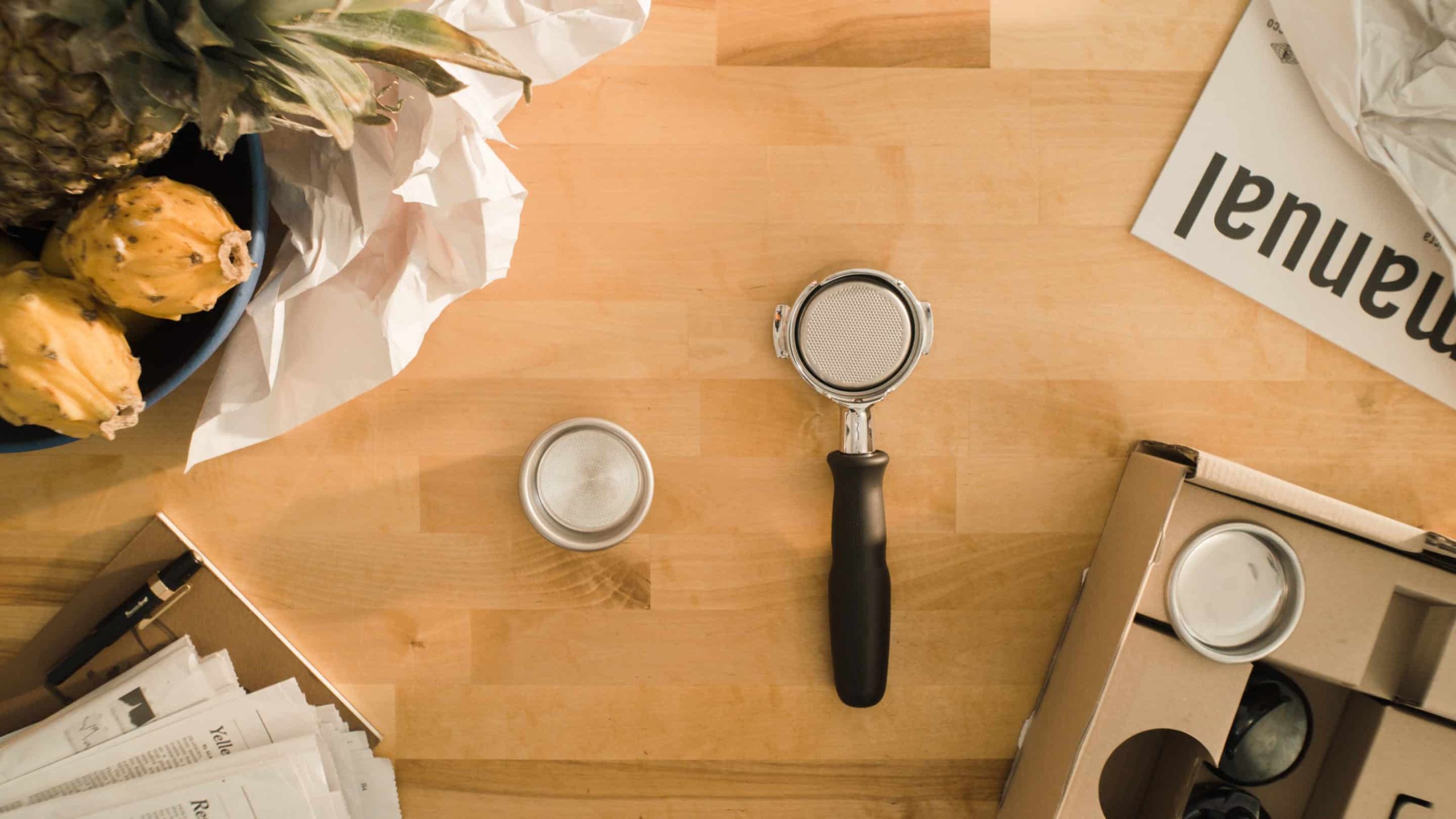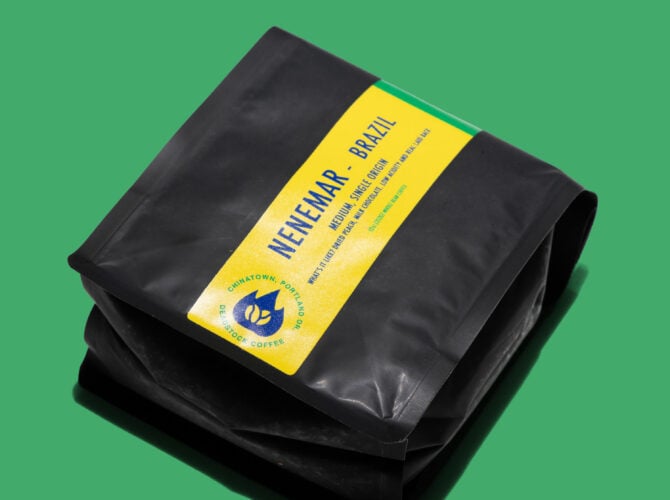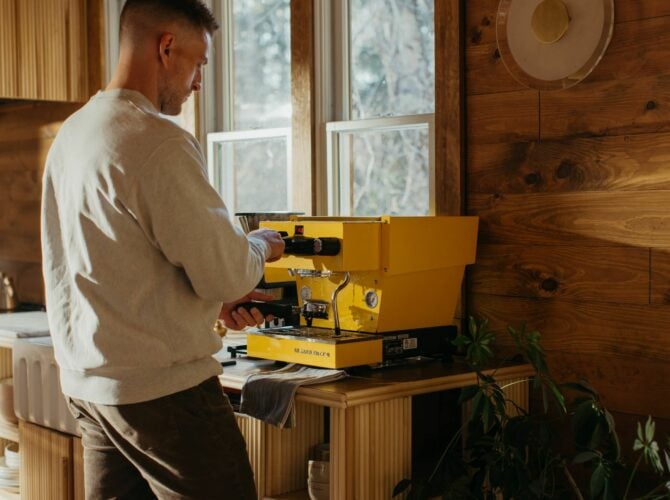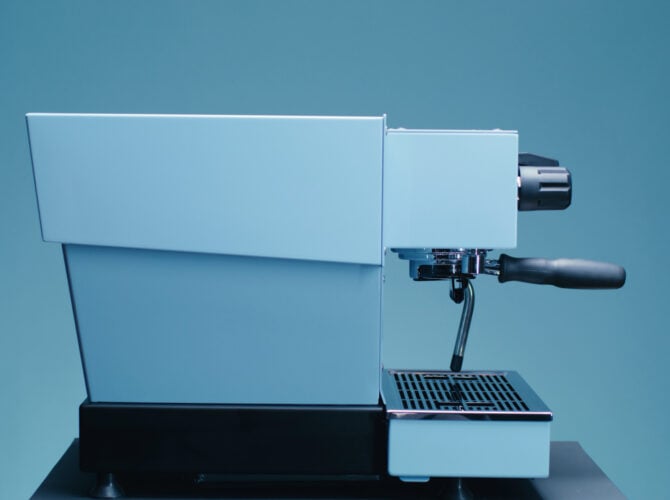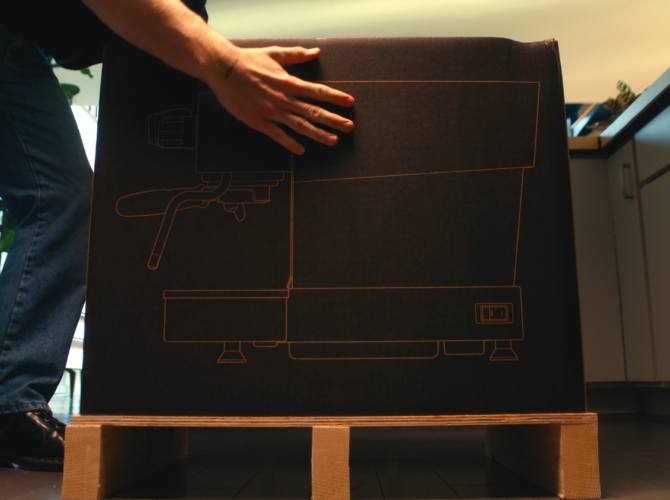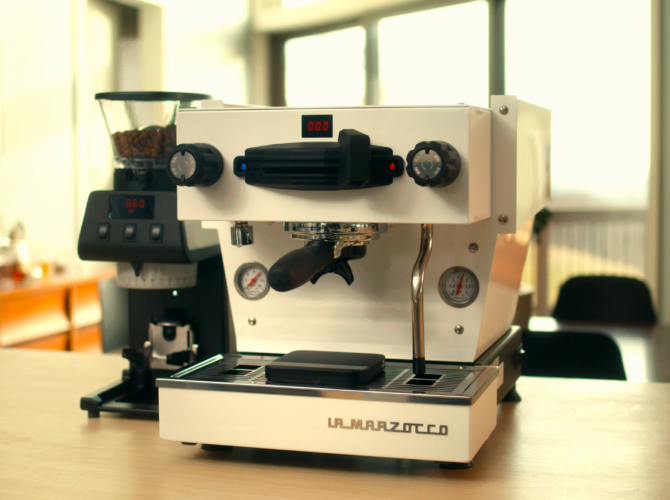Mise en Place
Barista is a profession that was first recorded in Italy around 1916. While some may think that it only takes a few days and a little bit of skill to master the occupation, the reality is that baristas are constantly evolving and balancing a host of variables that require constant recalibration day-in and day-out. The road to perfection requires the barista—and the home barista— to have an understanding of all the necessary equipment and tools involved in the espresso brewing process.
Much like cooking—or really anything in life—mastering a task comes down to being prepared. A seasoned chef will tell you, the most important part of cooking is having a well-appointed mise en place. Literally meaning “everything in its place,” this is a strategy in which a set of tools and ingredients are anticipated and laid out in advance of service, so that everything important to the preparation of a dish is right within arm’s reach. We like to employ this strategy at home—even in a simple way. You’ll discover your own workflow over time.
Here are some first things to think about pairing with your new espresso machine setup.
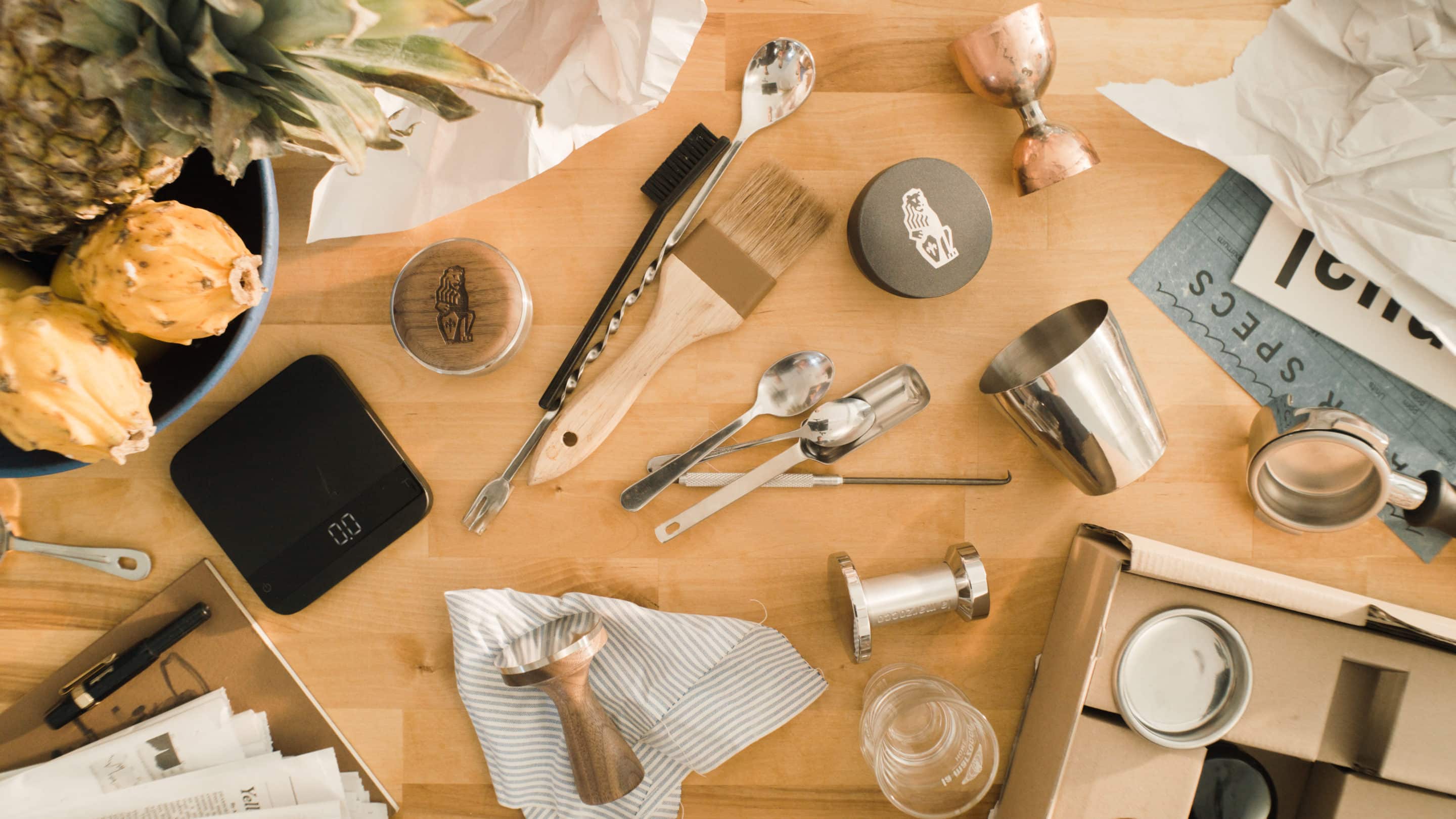
Sometimes, though, we find an espresso so balanced and delicious, it leads to us wanting to re-create that exact same experience ourselves.
Burr Espresso Grinder
There is no substitute for having a dedicated espresso grinder to pair with an espresso machine. Burr grinders can be automatic with a push button to dose out the grinds or use a manual paddle. Burr grinders can also have a hopper to hold a whole bag of coffee beans or be a single dose grinder meant to grind one dose at a time. All of these burr grinder options will work as long as from day-to-day and cup-to-cup, you are able to make small adjustments to the grind size.
Where it goes: The espresso grinder should be placed on the opposite side of our machine from the steam wand and drink preparation area. This keeps the bar area that is working with liquid free of loose coffee grinds.

Scale
Scales help us achieve consistency, and provide a window into the flow rate of our espresso. Without a scale, it can be extremely tough to get a consistent extraction. Measuring grounds in and grounds out will be the key to replicating our ideal espresso shots every time. It takes the guesswork out of the process. Often, baristas use a larger scale to weigh out the coffee grinds and keep that scale next to the grinder. A separate smaller scale that can fit nicely on the drip tray of the espresso machine is used for weighing out the espresso shots.
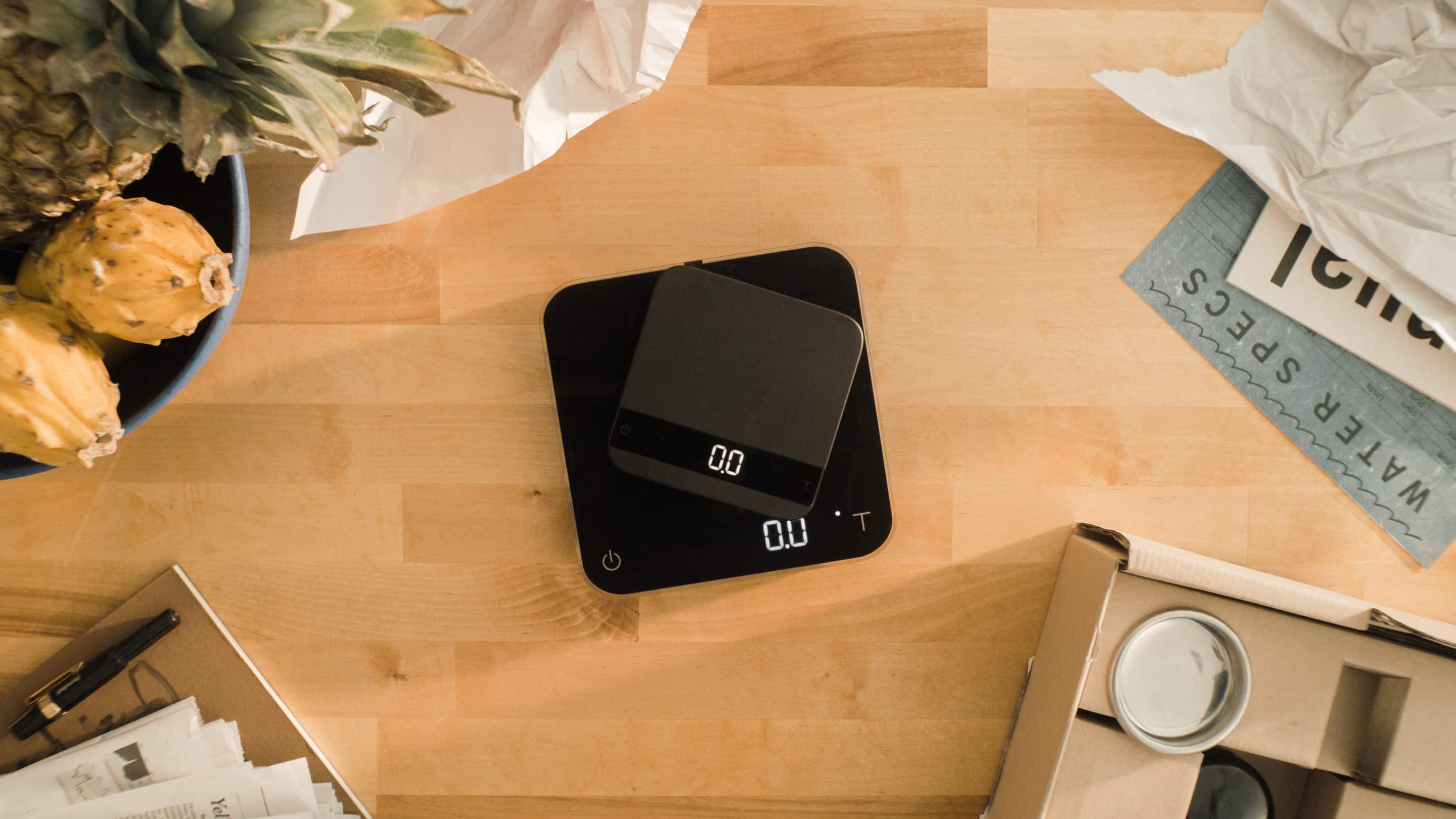
Accessories
There are a lot—a LOT—of espresso accessories out there. Keep in mind that you don’t need every gadget available to brew good espresso. Keep it simple. The more steps you add to our brewing process at once, the harder it becomes to keep things consistent. Here are some things we’d recommend to have on hand:
- Tamper
- Steam Pitcher
- Knockbox
- Towels
- Shot Glass
- Distribution Tool

Whole Bean Coffee
It may go without saying, but we’ll say it anyway. Make sure to have fresh, whole bean coffee on hand. You can purchase your favorite one or visit a local cafe to buy roasted coffee. If you are not happy with the outcome of how your espresso tastes, try changing up the coffee style:
Light roast coffees may taste fruity and bright.
Medium roast can be very chocolatey and nutty.
Dark roast is often full bodied with a rich, bold taste.
Convertible Portafilter
The portafilter is the connection between coffee and machine. The Micra comes with a convertible portafilter and two different spout setups. Everyone loves a nice bottomless shot, but there are times where spouts are just more handy. The Linea Micra’s bottomless portafilter was especially designed so that it is easy to change into a spouted portafilter while it’s still hot! The spouted part is made of a material that was chosen specifically to help the espresso machine heat up quickly. With the metal part of the portafilter being small, it is a prime contributor to the machine being able to heat up in just five minutes.
Where it goes: The portafilter should be kept locked in the group head when not being used. This keeps the portafilter hot and ready to brew as well as maintains a clean bar.
Connect the spout: There is only one way the spout can be connected. Place the spout towards and to the right of the handle, twist down to lock it in place.

Cleaning Solution & Accessories
Having a reliable cleaning solution and brushes will not only ensure us a safe and sanitary experience, but also the best tasting coffee! Be sure to backflush your machine regularly—once a week is a good rule of thumb for home machines.
La Marzocco Home App
The Linea Micra can be controlled using the La Marzocco Home App. Be sure to download and connect to your machine to unlock the following features:
On/off

Set a custom schedule on the Micra to turn on and off at specific times of the day. La Marzocco’s solutions team recommends turning the machine off and unplugging it when either going out of town or not using it for 36 hours or more.
Temperature
Use the app to change the temperature on the Micra. This is especially handy when making adjustments to your espresso, or if you’re following a recipe that recommends something specific. During bench testing the machine will be set to 93 degrees celsius and 200 degrees Fahrenheit as the standard temperature for brewing espresso.
Don’t worry about getting every accessory available. Start simple. With knowledge, practice and a few handy gadgets, you’ll be set up to brew espresso like a pro!
Questions? Book a virtual consultation with La Marzocco Home
